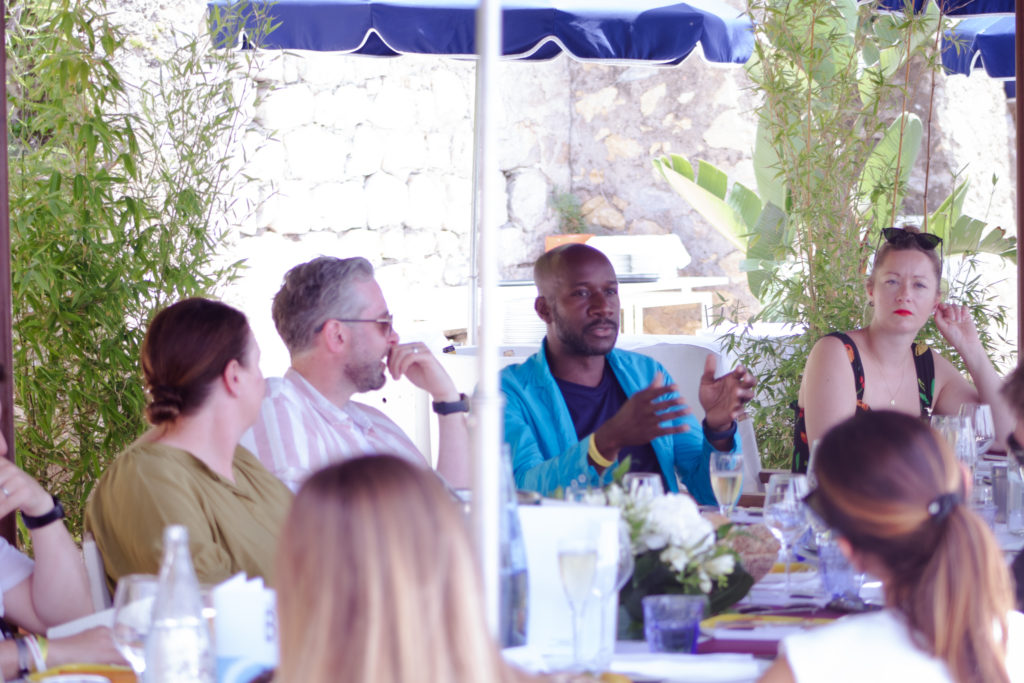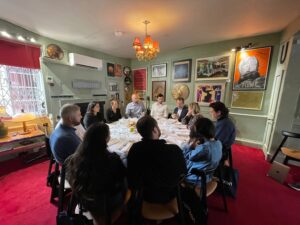News UK’s social creative agency, The Fifth, hosted a lively industry discussion in Antibes during The Cannes International Festival of Creativity in June, exploring the growth of the Creator Economy, and the challenges and opportunities that lie ahead. It has become apparent that this burgeoning new subset of marketing has thrived despite the pandemic.
The overall discussion proved to be a far-ranging and engaging lunch, indicative of the speed and scope of new opportunities presenting themselves in the social space in the second half of 2022.
The debate featured insights from: Oliver Lewis, CEO of The Fifth; Jess Markwood, COO of The Fifth; Becky Owen, Head of Creator Innovation & Solutions, Creative Shop EMEA, Meta EMEA; Scott Guthrie, Head of the Influencer Marketing Trade Body; Dino Myers-Lamptey, Founder of The Barber Shop; Lisa McDonald, COO of Storyful; Ollie Walls – Brandtech Group, Director, E-Commerce and Social; and Rich Devine, Executive Advisor and consultant on the Creator economy and web 3.0.
Scott Guthrie, Founder of the Influencer Marketing Trade Body (IMTB), a not-for-profit member organisation of which The Fifth is a founding member, set the scene by detailing how the sector had doubled in size in the last two years. “It’s now forecast to be worth $16 billion this year – that’s a 30 fold increase since 2015,” he said.
It’s an industry growing at speed. Today it represents 9.7% of social media advertising, and 2.3% of total advertising spend. “Small beer, comparatively, but if you look just two years ago, we represented 1.3% of total advertising spending and 7.7% social media advertising.”
Why has there been such a boom in influencer marketing? Guthrie identified three key drivers behind the continued growth: Creators are able to provide reach – their community; Creators have the ability to nudge that community into doing something / taking action; and because Creators are increasingly being seen as credible communications channels.
Guthrie said: “We’ve seen through the pandemic, Creators working with the United Nations and the World Health Organisation around positive messaging in regards to washing hands and wearing face masks, and also in raising funds for Ukraine and fighting disinformation. We’re also seeing Creators being invited to the White House to meet with the Press Secretary to talk about what America is doing about the Ukraine conflict.”
Consumers are turning to influencers for advice and information as well as product know-how. A BBC poll in June revealed young people, aged 11-16, are more likely to trust current affairs news from social media influencers than politicians. The survey of more than 2,000 people implied that the main source of news for the age group is social media.
It followed research from Takumi two years earlier that found one-in-four consumers were more likely to source news updates and opinions from influencers than from journalists and established news outlets. This rises to one-in-three for younger people. The group of thought leaders in the South of France agreed influencers were having an increasing impact on society, and proving invaluable to advertisers wanting to reach specific demographics on social media.
But it’s not all plain sailing, with competition increasing significantly. In 2015, there were 190 agencies and platforms in the space – today there are more than 1,360.
“We’re experiencing increased direct and indirect competition with platforms setting up their own marketplaces,” said Guthrie. “There’s also some media outlets that remain sniffy about influencer marketing, seeing them as a conflation between reality TV stars and social media influencers.”
Since the Influencer Marketing Trade Body was officially launched in October last year, the group has met with regulators and legislators, and provided written evidence to the UK’s DCMS Parliamentary Select Committee inquiry into Influencer Culture.
Guthrie added: “We’ve also worked with ISBA, the Incorporated Society of British Advertisers, to help formulate their code of conduct and then to explicitly incorporate elements on pay parity and diversity and inclusion. Where next? Well, potentially, it’s an $85bn industry in the next 6 months, with plenty of new trends and opportunities over the next 3-5 years.”









